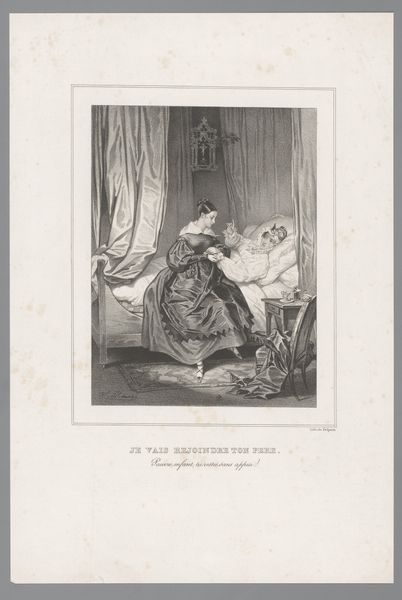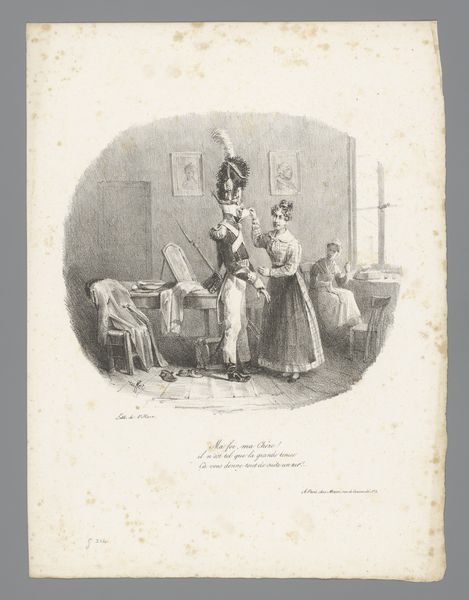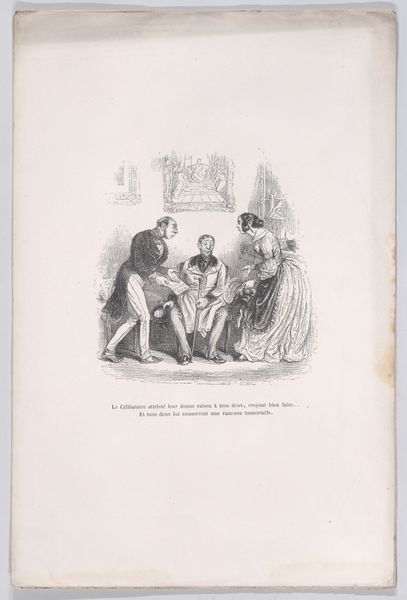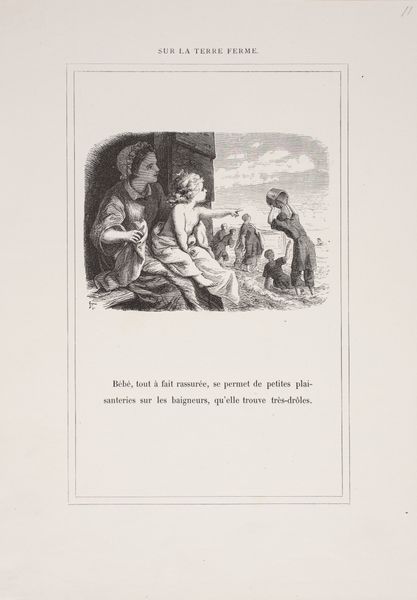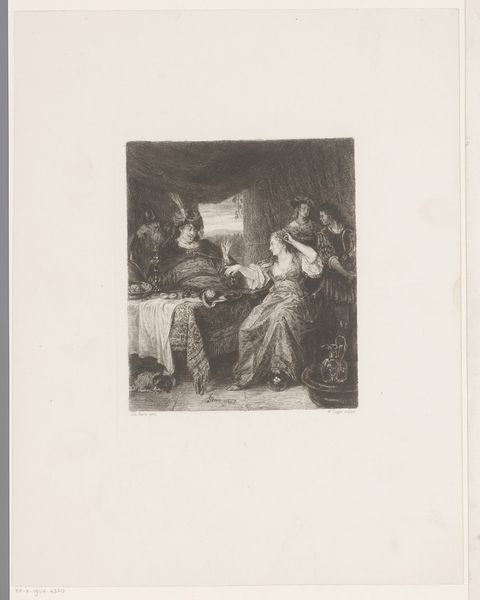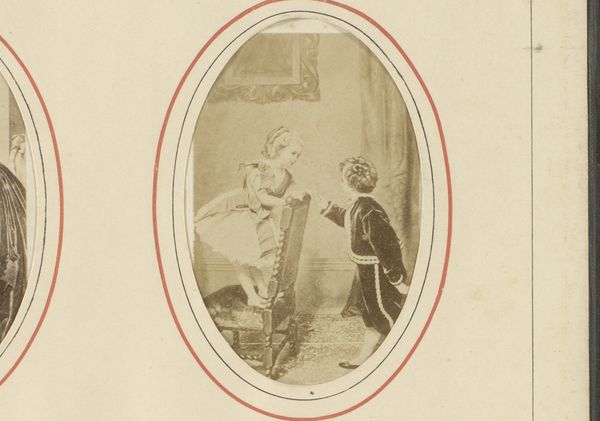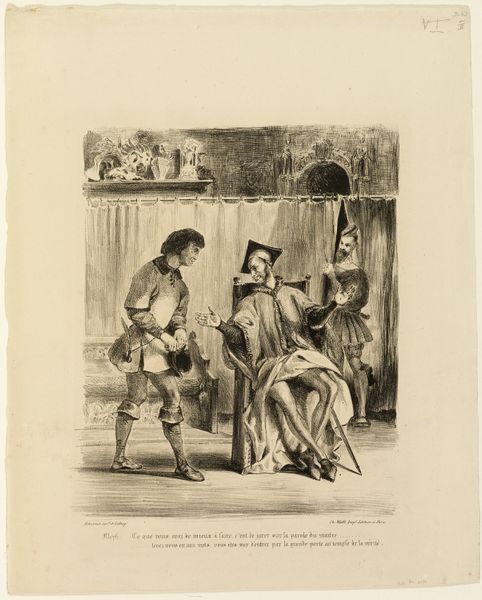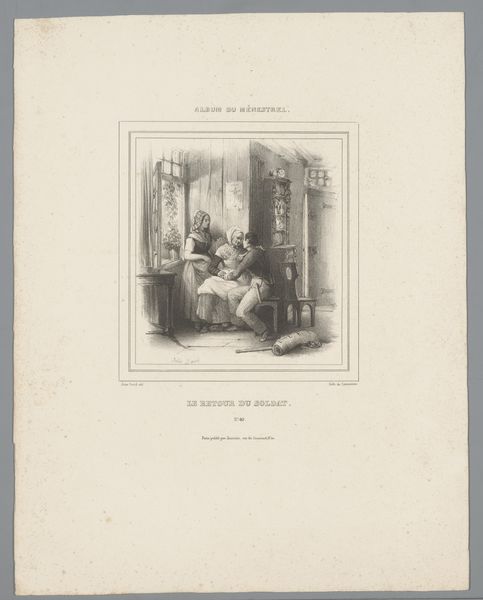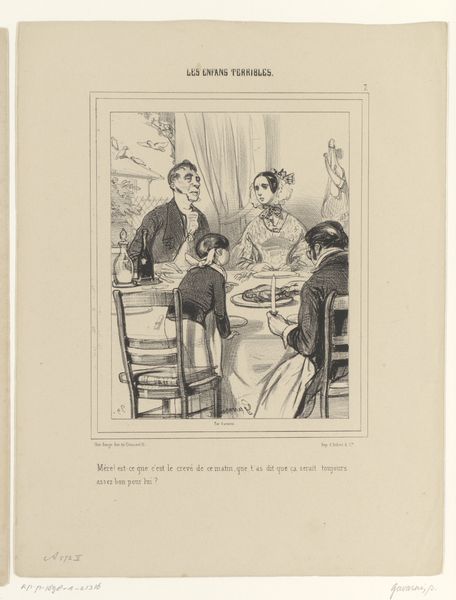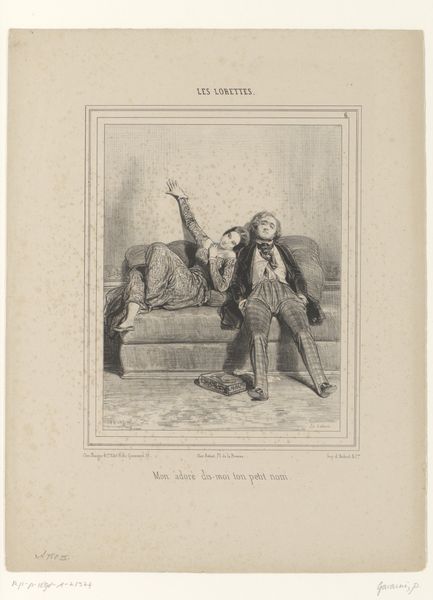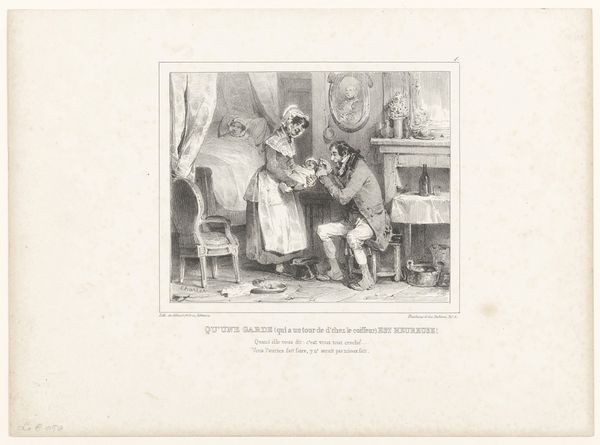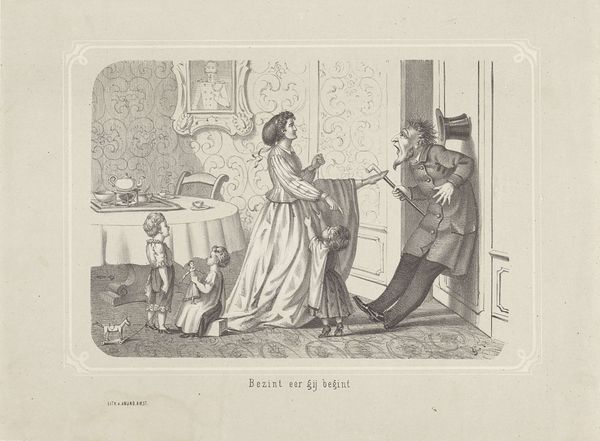
print, engraving
#
portrait
#
ink paper printed
# print
#
old engraving style
#
genre-painting
#
history-painting
#
academic-art
#
engraving
Dimensions: height 168 mm, width 136 mm
Copyright: Rijks Museum: Open Domain
Editor: This is an engraving called "Grétry presented to Voltaire," sometime between 1832 and 1900. It shows a scene of introduction in what seems like a lavishly decorated room. The mood feels very staged, almost theatrical. What do you make of this image? Curator: Well, it's fascinating to consider this piece through a postcolonial lens. Who gets to be memorialized in these "history paintings," and whose narratives are erased? Notice how Voltaire, representing Enlightenment ideals, is the focal point, but consider the implications of these "enlightened" values in relation to the history of colonialism and the exploitation of marginalized groups. Editor: So, you're saying it's important to think about the power dynamics represented here? Curator: Exactly. Think about the setting, the way wealth and status are so overtly displayed. It’s not just about aesthetic beauty; it reflects a social hierarchy where access to art and culture was limited. The very act of depicting this scene reinforces that structure, doesn't it? Do you think the artist intended a critique or simply a celebration of this world? Editor: That’s a great question. I hadn't really considered it in terms of who is being excluded. I was mostly just thinking about the composition and the clothing. Curator: It's easy to get lost in the details, but art is rarely made in a vacuum. Considering its socio-political context is key. Thinking critically about how artworks are products and propagators of power. It can change everything. Editor: This has really made me rethink how I approach historical art. Thanks so much. Curator: Likewise. It is always fruitful to consider the layers of historical works of art and reflect on the different ways of viewing them.
Comments
No comments
Be the first to comment and join the conversation on the ultimate creative platform.
